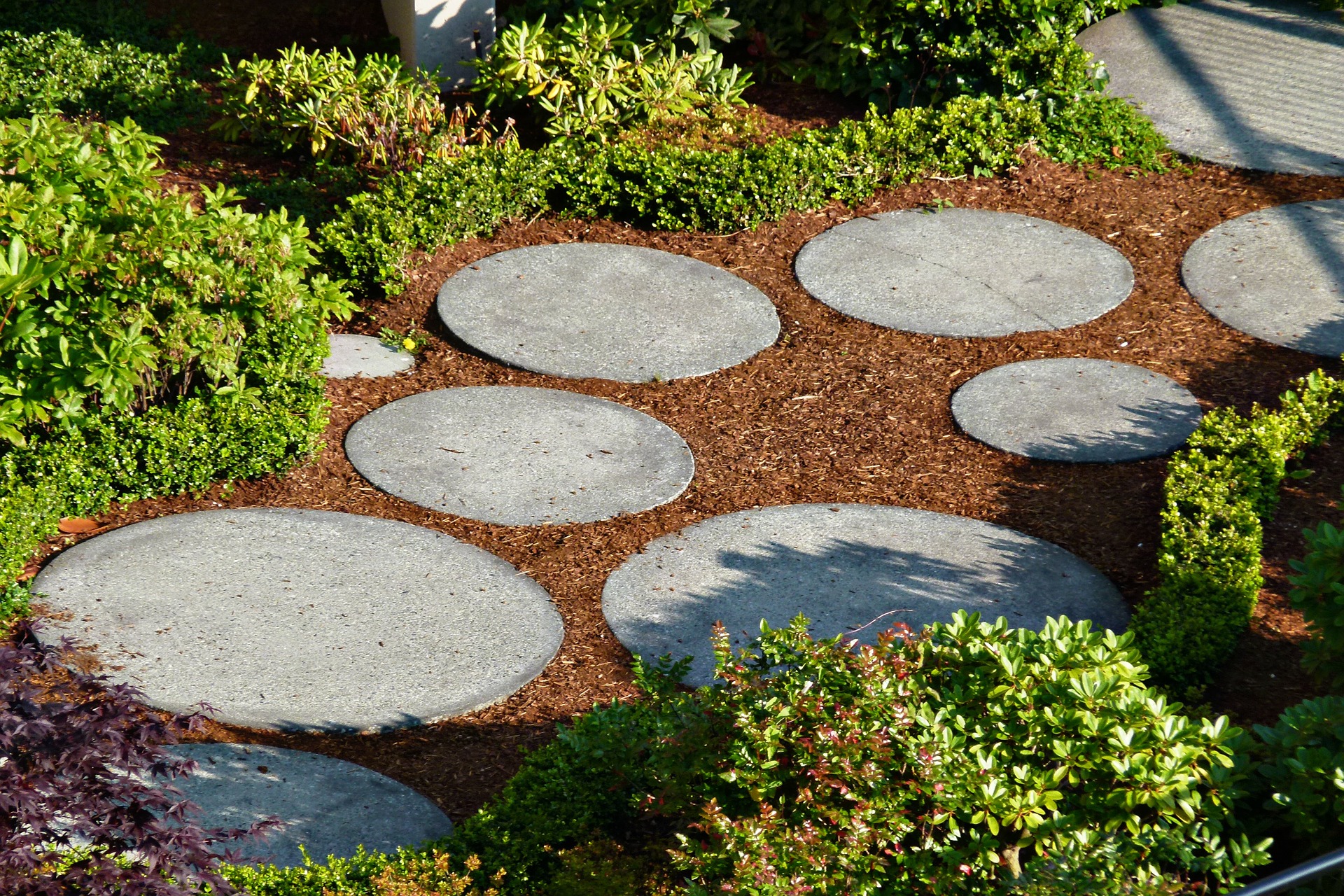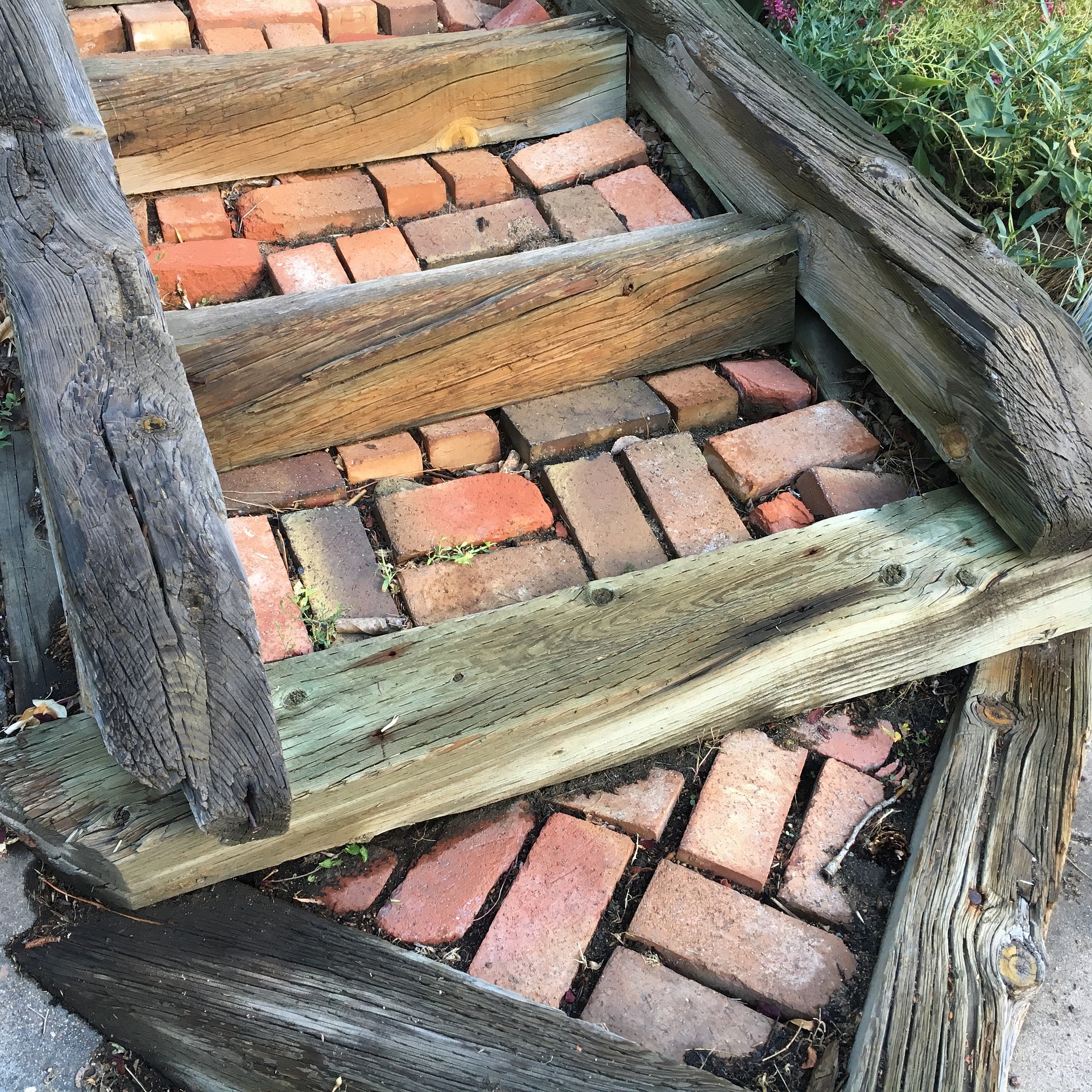Splendid Paths: Design Ideas for Home Gardeners

Paths lead you comfortably, safely and by the shortest route from the street to door, from patio to garden, from the garden to the greenhouse, and so forth about your home grounds. With driveways, they comprise your property’s all-important “circulatory system,” curb appeal. It is unwise to proceed with making a garden or remodeling until you’ve determined the location of paths.
Entrance Paths
Entrance paths lead to the main door of a house and receive continuous heavy traffic. They must be wide (at least 3 1/2 feet) so that two people can walk side by side. Avoid unnecessary curves that slow down the approach to the door. Use durable surfacing materials, which are easy for walking, not slippery when wet and should harmonize with the architecture of the house.
Service Walkways
Service paths are those which connect the front yard to the rear service area or link a terrace to a side door or garage. Generally, they receive less traffic than entrance paths, but they too should lead directly from one point to another. Their width and surfacing material are determined by the amount of traffic they will receive. Usually, a 2-foot width is the narrowest they can safely be.
Garden Pathways

Garden paths are not, for the most part, utilitarian. They receive comparatively little traffic, and because the flowers and shrubs that border them call for attention, persons willingly meander slowly. Great latitude in their design and construction is permissible; however, to give the greatest pleasure, even garden paths must lead somewhere – to a bench, a specimen tree, a group of unusual flowers.
One way to design an efficient “circulatory system” is to observe the tracks people make as they walk around your grounds before the soil is finally graded or to observe the worn areas in an established lawn. Without fail people will reach their destination by the shortest and easiest possible route. Design a path plan for a home property with this thought in mind.
Paths near buildings usually look best if they parallel the building line, and on a rolling site if they follow major contours. Cut diagonally up a gentle slope for easy ascent but go directly up a steep slope, in which case steps are required.

Remember that paths appear more pleasing when they meet a door, a drive or another path at right angles. To do this, you may have to curve them slightly. This is usually the only justifiable curve in the design of an entrance or service path. The exception being a path that must turn to avoid a tree, a boulder or other existing object.
The purpose of garden paths is to permit easy viewing of flowers, and entrance and service paths also become more cheerful when plants are set beside them.
In general, the best garden path edging ideas call for low-growing annuals and perennials. Rambling kinds that spill over the path are picturesque, but impede traffic, so use them sparingly and be willing to restrain them.
In the North, flower beds appear forgotten many months of the year, and therefore it may be wiser to garnish entrance paths with evergreen ground covers, interplanted with spring-flowering bulbs and annuals for summer color. Thorny plants like yucca along a narrow path are obviously a poor choice unless your object is to force people to stay on route. However, this will not be necessary with a properly designed and located path.
Night lighting of paths is within reach of all homeowners today. The necessary equipment is readily available and not expensive. Modern mushroom-like fixtures direct light on paths and steps. Few are required for safety. Post lamps are not recommended in many situations because they tend to blind pedestrians.
During the construction of paths, it is most economical to incorporate electric cables and outlets unless you plan on going solar. Supply dealers and your electrician can help you to determine your requirements. Let the planting beside the path conceal the lighting fixtures by day.
Thank you, Gary, for sharing this post with us. You can connect with him via his website: PlantCareToday.com
You can check out some of my previous post featuring our garden.
Be sure you are subscribed so that you don’t miss a thing!
Let’s connect!
Wow. I’m going to try this! Looks great. Thanks for the tip!